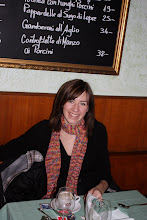On Saturday, we took a drive to Annecy (a nn......see), France. Yet another picturesque old town on yet another beautiful lake with a stunning alpine skyline in the distance (they're everywhere!)
nn......see), France. Yet another picturesque old town on yet another beautiful lake with a stunning alpine skyline in the distance (they're everywhere!)
 nn......see), France. Yet another picturesque old town on yet another beautiful lake with a stunning alpine skyline in the distance (they're everywhere!)
nn......see), France. Yet another picturesque old town on yet another beautiful lake with a stunning alpine skyline in the distance (they're everywhere!)The weather forecast was a bit dicey, but it actually turned out very nice. This beautiful old town with narrow, cobbled roads, shops and restaurants of all kinds everywhere, and loads of street vendors to boot. It's about an hour and a half drive from Lausanne. We had fun checking out loads of antiques and other collectibles and in the process actually got some Christmas shopping done.
When we got their we were hungry so the first thing to do after getting our bearings was to find someplace to eat. We found a cute brasserie with a diverse menu and a biker for a waiter. I picked the place because it had some local "Savoyard" menu items and the old standby......steak, frittes.

We decided to split our choices between local and familiar. Therese had an interesting dish of sliced meats (prosciutto, ham, salamis) along with salad and boiled potatoes to be cut up and put into a "fondue" if you will of local cheeses and ham. I had the French version of a  burger and fries.....the steak, frittes. Often called entrecote and pomme frittes or entrecote Parisienne avec pomme frittes, this is comfort food. You can get it almost anywhere in France and french speaking regions such as Lausanne. Add a good Bordeaux, (which we did) and you're set.
burger and fries.....the steak, frittes. Often called entrecote and pomme frittes or entrecote Parisienne avec pomme frittes, this is comfort food. You can get it almost anywhere in France and french speaking regions such as Lausanne. Add a good Bordeaux, (which we did) and you're set.
 burger and fries.....the steak, frittes. Often called entrecote and pomme frittes or entrecote Parisienne avec pomme frittes, this is comfort food. You can get it almost anywhere in France and french speaking regions such as Lausanne. Add a good Bordeaux, (which we did) and you're set.
burger and fries.....the steak, frittes. Often called entrecote and pomme frittes or entrecote Parisienne avec pomme frittes, this is comfort food. You can get it almost anywhere in France and french speaking regions such as Lausanne. Add a good Bordeaux, (which we did) and you're set.After lunch we did some shopping and as is our usual custom visited the local church. For us the more stunning beauty can be found in the smaller churches. Not that the large cathedrals aren't stunning.....just that the smaller churches sometimes contain quite nice surprises.
We found this little church in town with a "post-Baroque" style of architecture. Some Gothic elements, some Baroque. A real gem. In it we found this beautiful painting on the wall of an enclave.










 Mom and I took a trip to London on our way to meet Dad in Paris. We stayed at the County Hall and our room had a head-on view of Big Ben and Parliament! The trip was four days, so I'll keep it short with just the highlights:
Mom and I took a trip to London on our way to meet Dad in Paris. We stayed at the County Hall and our room had a head-on view of Big Ben and Parliament! The trip was four days, so I'll keep it short with just the highlights:













